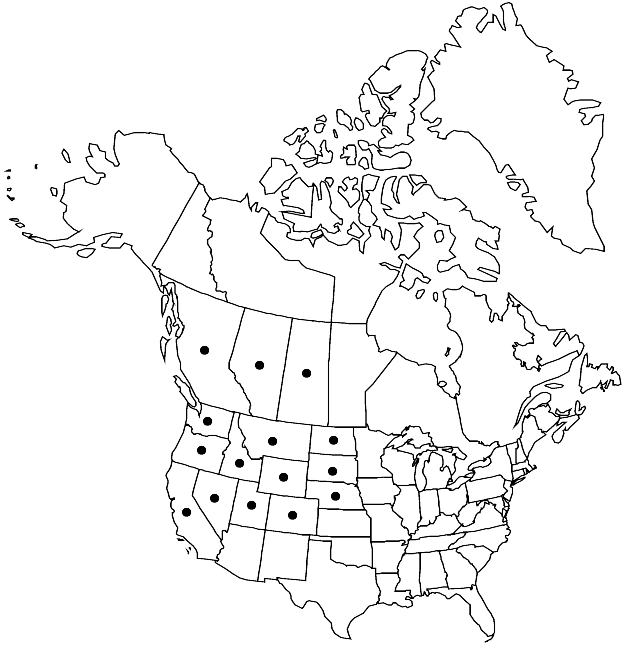Alyssum desertorum
Denkschr. Kaiserl. Akad. Wiss., Wien. Math.-Naturwiss. Kl. 51: 302. 1886.
Annuals; canescent throughout except fruit, trichomes appressed, 8–20-rayed. Stems simple or few to several from base, erect, ascending, or decumbent, (0.2–)0.5–1.8(–2.8) dm. Cauline leaves subsessile or (proximal) attenuate to petiole-like base (to 0.5 cm); blade linear to oblanceolate-linear, (0.3–)0.5–2.5(–3) cm × (0.5–)1–3(–4) mm (gradually smaller distally), base attenuate, apex acute. Fruiting pedicels ascending or subdivaricate, straight, stout, (1–)1.5–3.5(–4.5) mm, trichomes uniformly stellate. Flowers: sepals oblong, 1.4–1.8(–2) × 0.4–0.5 mm, stellate-pubescent; petals pale yellow, oblanceolate, 2–2.5 × 0.5–0.6 mm, base attenuate, apex obtuse or retuse, sparsely stellate-pubescent abaxially; filaments: median pairs not toothed, gradually expanded from apex to narrowly winged base, lateral pair with broadly winged appendage apically notched into 2 teeth, 1–1.8(–2) mm; anthers ovate, 0.1–0.2 mm. Fruits orbicular, 2.5–4(–4.5) mm diam., apex shallowly emarginate, usually glabrous; valves uniformly inflated at middle, broadly flattened at margins, often glaucous, rarely sparsely pubescent (when young); ovules 2 per ovary; style 0.3–0.7 mm, glabrous. Seeds ovoid, slightly compressed, 1.2–1.5 × 0.9–1.1 mm, margined or not. 2n = 32.
Phenology: Flowering Apr–Jul.
Habitat: Deserts, rocky areas, disturbed sites, roadsides, fields, meadows, sagebrush flats
Elevation: 800-2000 m
Distribution

Introduced; Alta., B.C., Sask., Calif., Colo., Idaho, Mont., Nebr., Nev., N.Dak., Oreg., S.Dak., Utah, Wash., Wyo., Europe, c Asia.
Discussion
Selected References
None.